Love was definitely in the air on Isabela Island and we yearned to become voyeurs. Creeping along a dirt path at the base of a volcano in the rainy season, we inched closer and closer to the sound of rhythmic grunting, hoping to catch sight of giant tortoises copulating in the thick greenery.
We had already studied the tracks and poop of the poster child for the Galápagos Islands. We had just stopped to commune with several tortoises, some who nonchalantly eyed our group, others that withdrew into their domed shells no matter how wide a berth we gave them. But those unexpected mating sounds were something special.
“When tortoises mate, only the male vocalizes,” whispered naturalist guide Tanya Helmig. “Let’s take just 10 seconds to listen to it in the quiet.”

In Galápagos National Park, you must stay six feet away from wildlife, visit with a guide and stay on trails like here at Urbina Bay on Isabela Island/Jennifer Bain
Try as we might, we couldn’t pinpoint where the grunting, groaning and sound of scraping shells was coming from and didn’t see even the slightest rustling in the woods. Since we were in Galápagos National Park, where strict rules protect the famously fearless wildlife, we were forbidden from stepping off the trail.
“This is cool, even though we can’t see it,” Helmig consoled us. “Just imagine it.”
Imagine it we did, both the clunky deed and the eggs that will hopefully hatch, survive a multitude of threats and grow into gentle giants that can live more than 150 years.

At Urbina Bay on Isabela Island in April, a giant tortoise munches on greenery during the lush rainy season/Jennifer Bain
The Galápagos Islands lie 600 miles off the west coast of Ecuador on the equatorial line in the Pacific Ocean. There are 19 main islands in this volcanic archipelago (including four that are inhabitited) and National Geographic-Lindblad Expeditions helped me see eight of them.
This is the company that brought the first “citizen explorers” to the Galápagos in 1967 and paid the salaries of the first two national park rangers. Now it’s showing conservation-minded travelers how one of the planet’s most unique ecosystems is managed and why British naturalist Charles Darwin’s 5.5 weeks here in 1835 informed his theory of evolution by natural selection and 1859 groundbreaking book On The Origin of Species.
Ninety-seven per cent of the land in this isolated Eden is protected by the park and just three per cent is set aside for the 33,000 humans who live here. Like many of the 300,000 people who visit each year, I came for the Blue-footed boobies but was charmed by the Godzilla-like marine iguanas and world's smallest and most northerly occuring penguins. Above all, I was humbled by the work being done to save the iconic giant tortoises.

The taxidermied body of Lonesome George can be viewed on guided visits to the Fausto Llerena Breeding Center in Puerto Ayora, Galápagos/Jennifer Bain
Lonesome George is lonesome no more.
The last of the Pinta Island tortoises died in 2012 at the age of about 100 without procreating, leaving to mourn his devoted caretaker, park ranger Fausto Llerena, and a global legion of admirers. The taxidermied body of the saddle-backed tortoise that’s considered “a symbol of hope” is now kept in a climate-controlled room on Santa Cruz Island.
“When he passed away, there was no hope,” explained naturalist guide Celso Montalvo as he led me through a humidity chamber and into the darkened room for a brief visit.
“But he is an inspiration because he taught us that we have a huge responsibility, that we really have to watch. And so the hope is that everything that stays within our responsibility, that we can protect it, manage it, and then then that we can hurry up and do our job better. We have the hope to bring Galápagos back from the brink of extinction.”

Only 11 of the original 15 species of giant tortoises found in the Galápagos have survived, but a breeding program is rewilding the icon of the islands/Jennifer Bain
Fifteen species of giant tortoises — the largest in the world — once roamed these islands but today only 11 survive.
For those that need a refresher, turtles are aquatic omnivores with flat, thin shells and webbed feet. Tortoises are terrestrial herbivores that usually have heavy, domed protective shells and sturdy legs. Galápagos, though, also has saddle-backed tortoises with long legs and necks for finding food in desert zones.
The Galápagos Islands were actually named for their giant tortoises. As the Galápagos Conservancy explains, the old Spanish word "galapagos" meant saddle and was the term that early explorers used for the tortoises due to the shape of their shells.
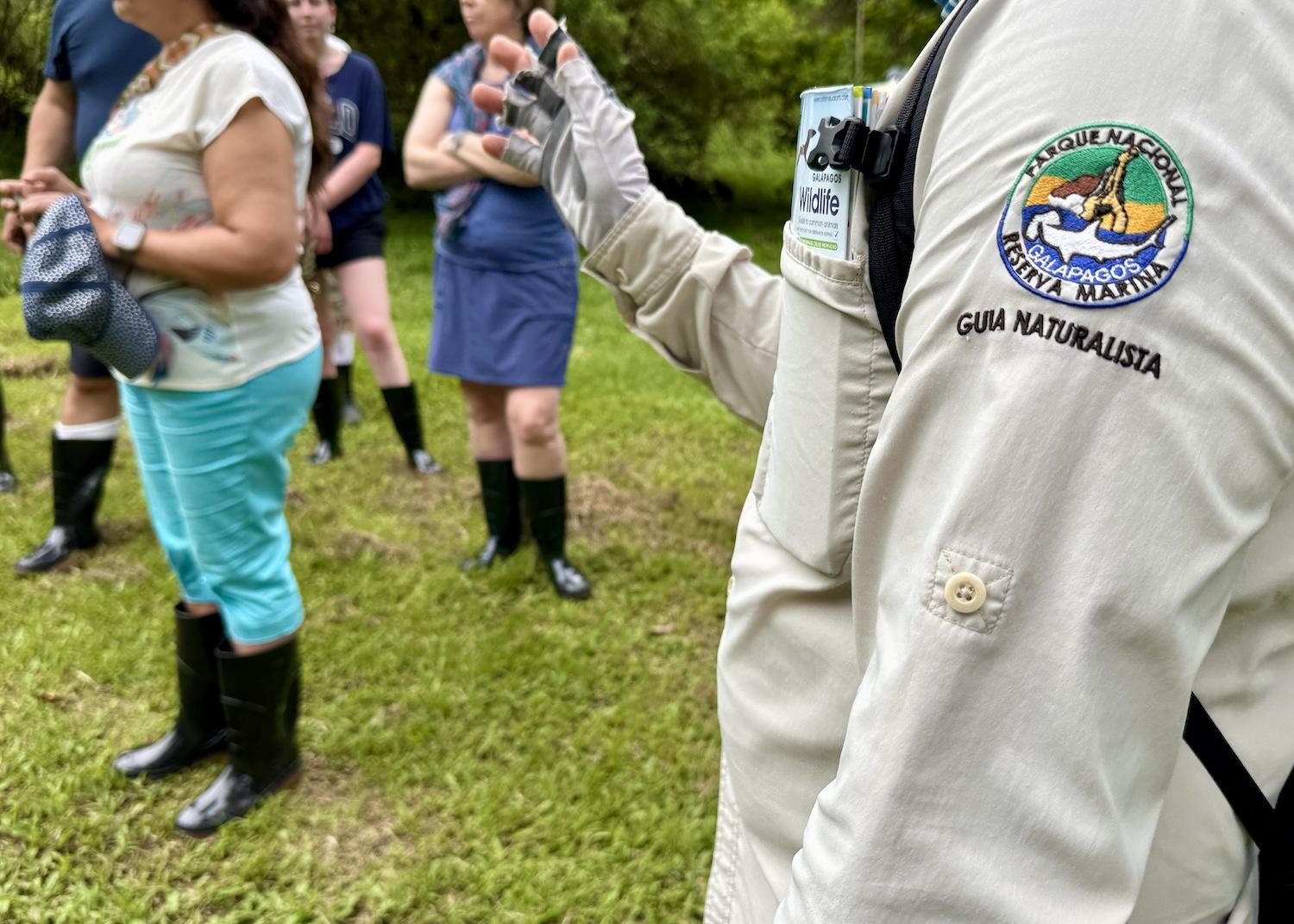
Galápagos National Park trains and certifies guides. These naturalists, who work for cruise lines and other private companies, wear official park shirts as uniforms/Jennifer Bain
The Lonesome George room is in Puerto Ayora, the city where about 13,000 Galapagueños live. The Galápagos National Park Directorate, Charles Darwin Research Station and Galápagos Conservancy all have an overlapping presence on this land where the Ruta de la Tortuga (Tortoise Path) and the Fausto Llerena Rearing Center are big draws.
You can’t enter the property without a guide like Montalvo and the other naturalists who have been trained and certified by the park.
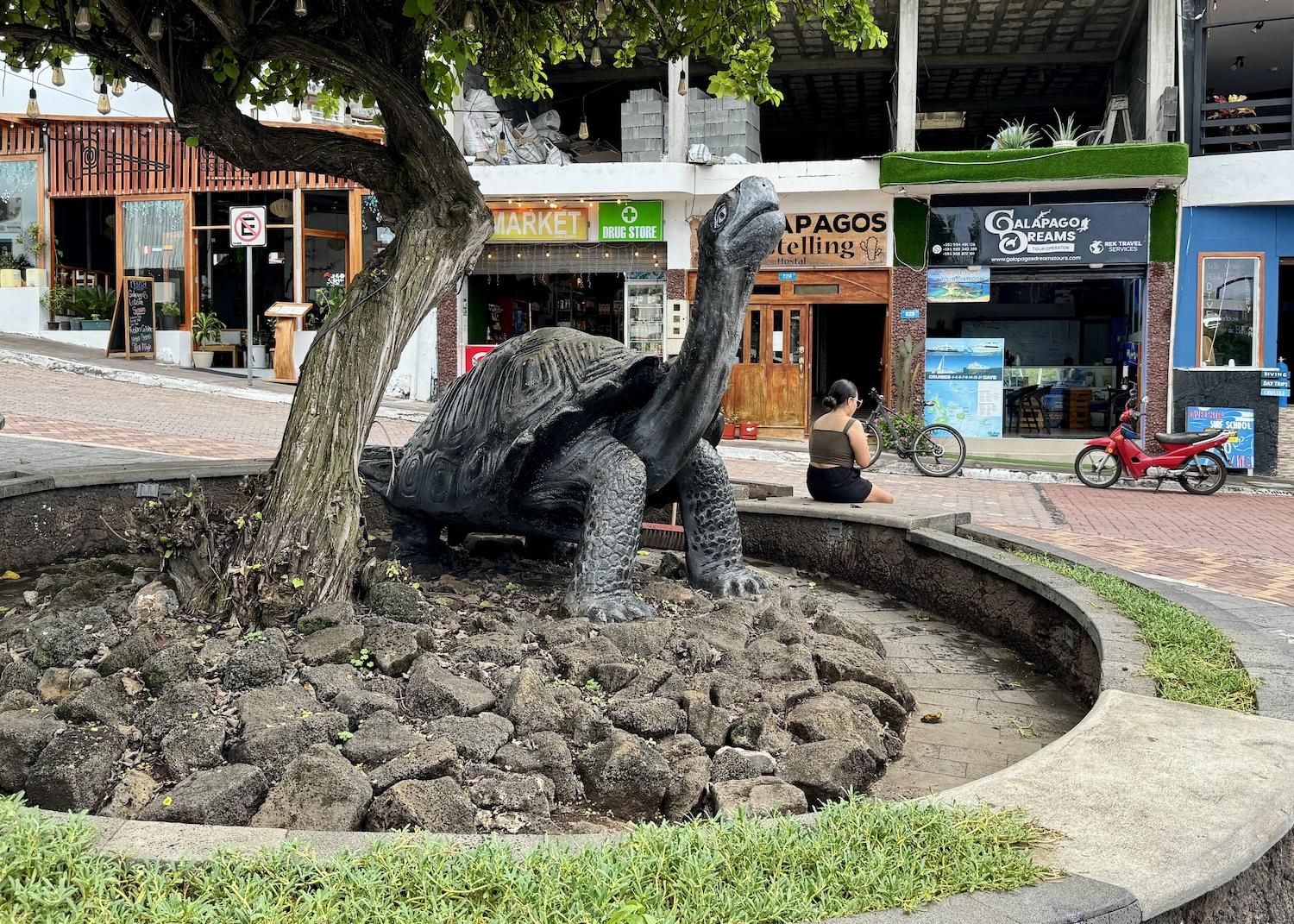
People are surprised to learn that 33,000 people live in the Galápagos, many in the city of Puerto Ayora of Santa Cruz Island, which celebrates giant tortoises and other iconic wildlife/Jennifer Bain
Since the official European discovery of the Galápagos nearly 500 years ago, its giant tortoises have faced a barrage of threats. Buccaneers and whalers captured them for meat and oil for street lamps. Invasive species like black rats, goats, feral pigs, feral dogs, cattle, cats and fire ants have decimated populations. Climate change, habitat fragmentation and poaching are ongoing challenges.
When the park was established in 1959, some of the tortoise species were heading towards extinction while others were deemed vulnerable or threatened. But a captive breeding program launched in 1965 has shown great success and has released more than 10,000 giant tortoises back into the wild. The collaborative work is now handled by the park and Galápagos Conservancy under the Inciativa Galápagos program.
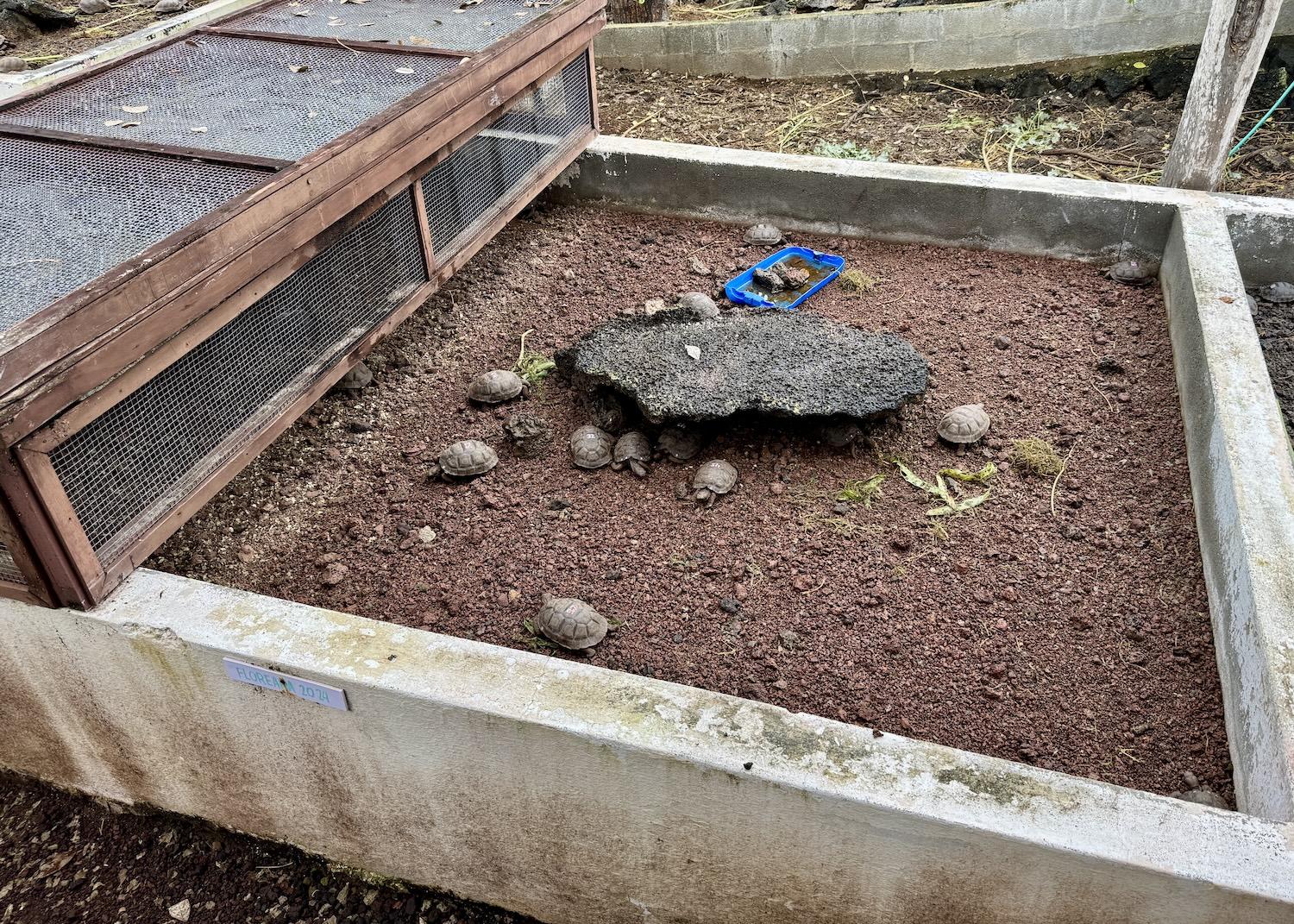
At the Fausto Llerena Breeding Center, giant tortoise hatchlings (these from Floreana Island and born in 2024) are reared in pens and segreated by their home islands/Jennifer Bain
I learned how eggs and/or hatchlings are collected from wild tortoise nests and safely incubated at breeding centers. Once hatched, the tortoises remain for about five years until their shells are strong enough for them to be repatriated to their home islands, evade endemic and invasive predators, slowly mature and eventually breed naturally in the wild.
The science and technology surrounding captive breeding is always evolving. Automated incubators now allow for precise temperature control. Since incubating eggs at higher temperatures produces more females, breeding programs have refined protocols to accelerate population recovery.
“We have a saying — cool dudes, hot babes,” joked Montalvo.

A saddle-backed tortoise lives at the Fausto Llerena Breeding Center safely growing and awaiting repatriation to its home island/Jennifer Bain
More than 90 tortoises across various islands are now being remotely monitored by satellite so researchers can study their movement patterns, habitat use, nesting areas and migratory behaviors. Just before my visit to Isabela Island, 170 giant tortoises were repatriated there in a complex transfer that included 18 park rangers, speedboats and a long, grueling hike over rough terrain.
Despite these successes, it is slow going. Between 200,000 and 300,000 tortoises once roamed the archipelago and the current population is just 10 to 15 per cent of that, so there is much work to be done to bring the numbers back up to historical levels.
After paying my respects to Lonesome George, I got to watch tiny hatchlings living collectively in protected pens where they learn to find food and climb rocks. They live near interpretive signs that remind visitors from around the world that “together we can prevent more extinction.”

Naturalist Celso Montalvo stresses the importance of staying at least six feet from wildlife like the giant tortoises of Galápagos/Jennifer Bain
That afternoon on Santa Cruz Island, I traveled to a nature preserve along the tortoise migration route. Rancho El Manzanillo gave me an Ecuadorian lunch and rubber boots for a guided walk through mud and fire ant territory.
There was even colorful signage that explained that mating takes hours, but the actual deed lasts just minutes because the males need most of that time to subdue the females. Dome-shelled tortoises reach sexual maturity at 20 to 25, by the way, and lay 16 to 20 eggs at a time.
Even though the ranch is outside the national park’s protected zone, the same rules apply about staying six feet away from all Galápagos wildlife. As well, the wild tortoises are free to come and go and it’s a crime to fence them in or try to stop them.
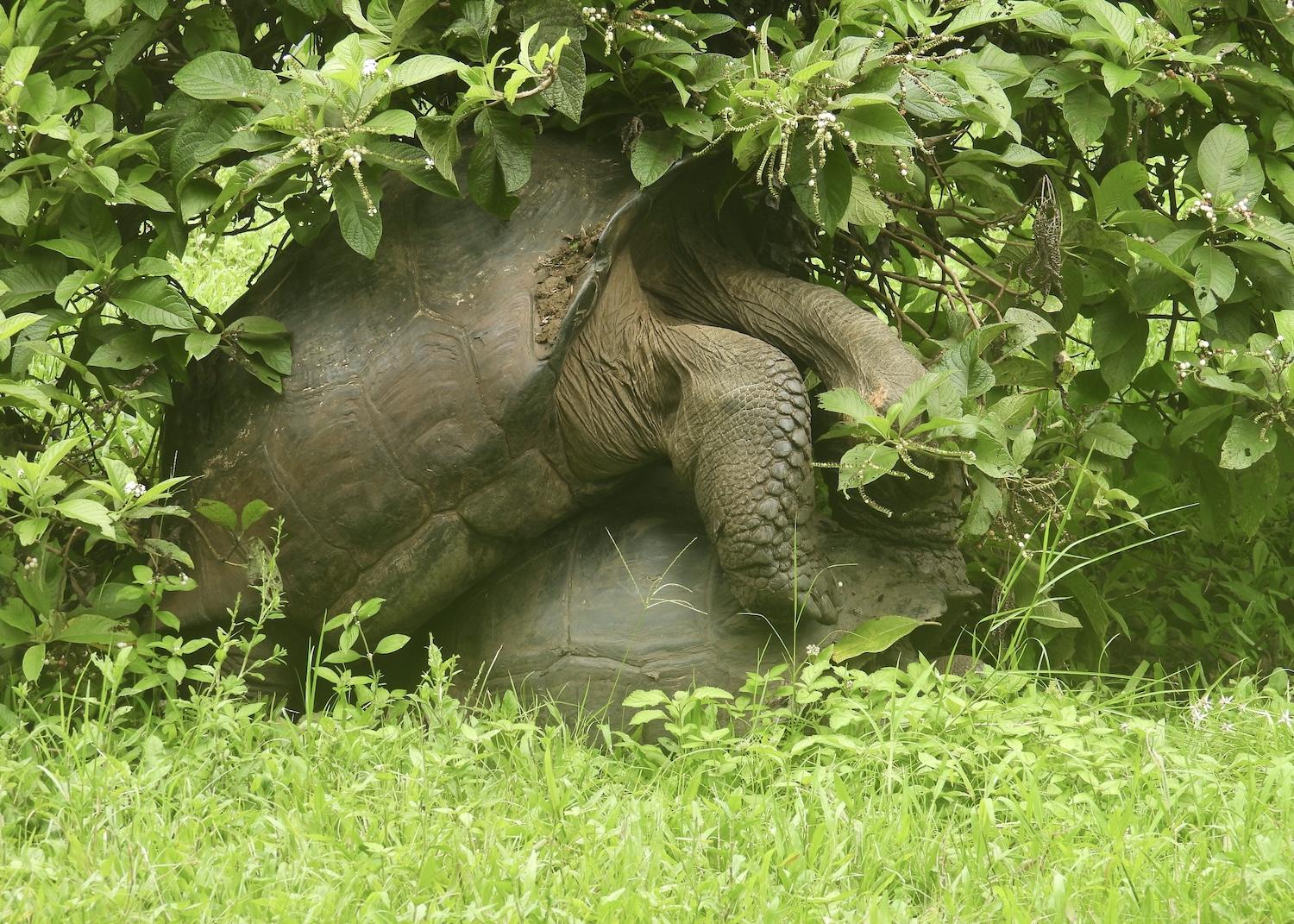
Two giant tortoises mate under partial cover of a bush on a migration route through Rancho El Manzanillo on Santa Cruz Island/Jennifer Bain
Suddenly, familiar moans filled the air. “You’ve already heard that sound,” teased Montalvo. “You know what that sound is for.”
While most of the area’s tortoises had apparently trekked off to a distant, restricted area to mate in private, two were going at it under a pretty heliotropium shrub. Sometimes the males mount from the wrong end of the females, but this time everything appeared to be in order.
Grateful to finally be voyeurs for a few fascinating minutes, we soon moved on so the lovers could have some privacy.

A lusty male tortoise chases a reluctant female at Rancho El Manzanillo in April during breeding season/Jennifer Bain
We toured the ranch and admired lone tortoises of all ages and sizes. Just before leaving, though, I saw a small crowd gathering and couldn't resist becoming a lookyloo.
A young male tortoise had awkwardly sidled up to a small female. She tolerated his nuzzling for a few minutes then dashed — yes, tortoises can be surpisingly fast — away. An older male who seemed to be lounging nearby sprang into action, giving chase with such gusto that it was clear that nothing was going to stop him from helping repopulate the Enchanted Islands.
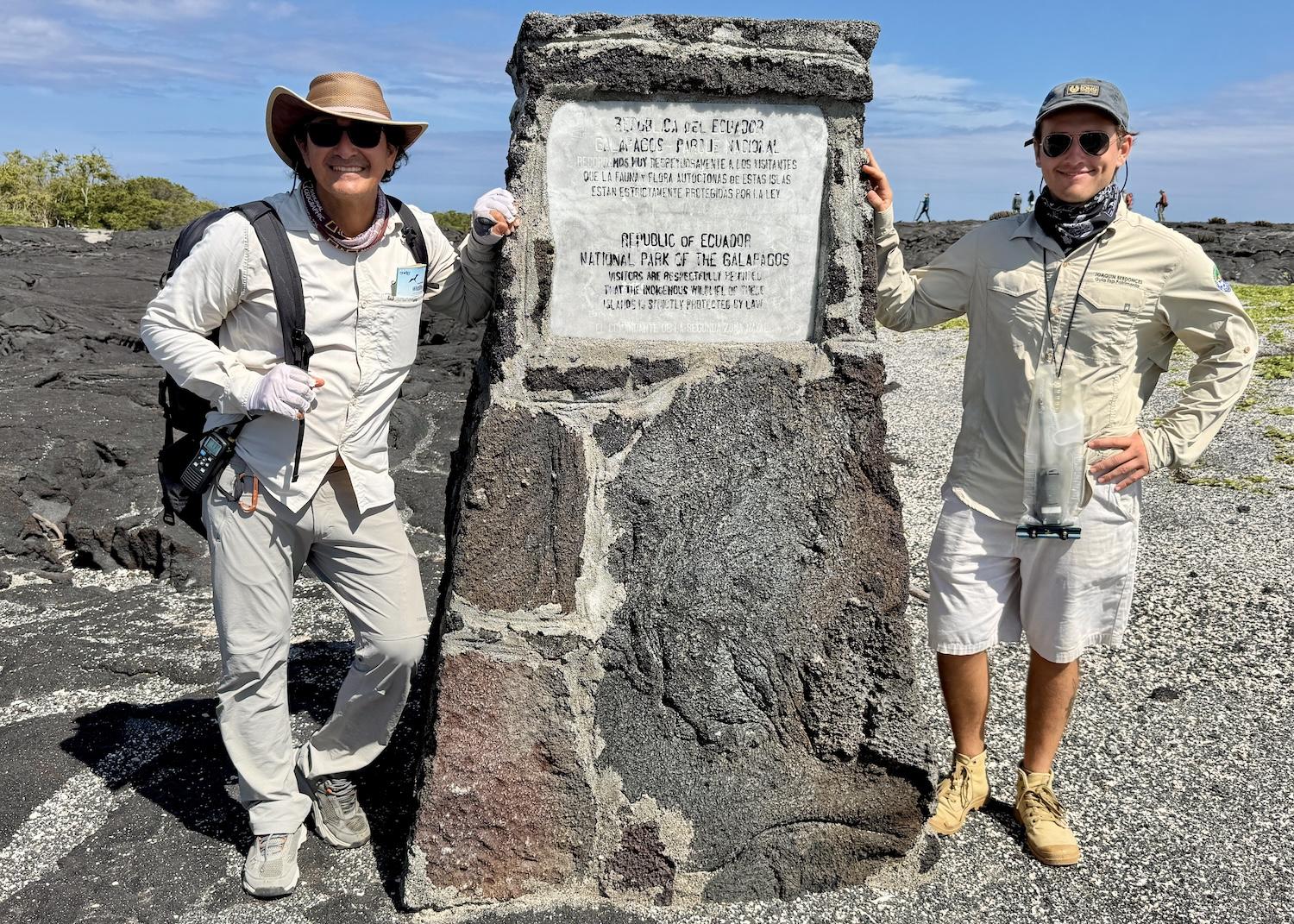
On Fernandina Island, naturalist guide Celso Montalvo stands by a national park sign with Joaquin Berdonces, who is finishing his Galápagos National Park naturalist guide course with an internship. The fading signage reminds visitors that all wildlife is protected by law/Jennifer Bain

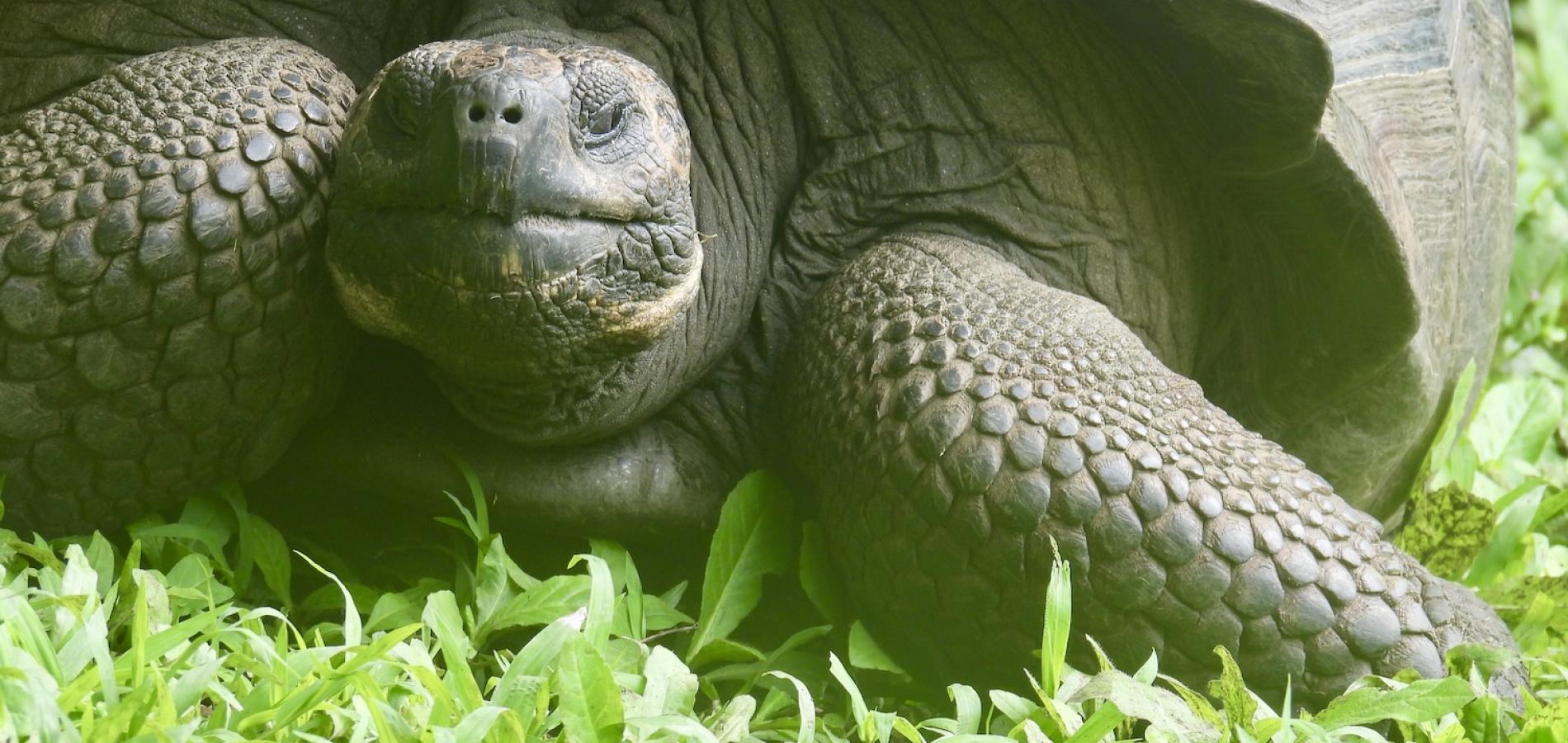
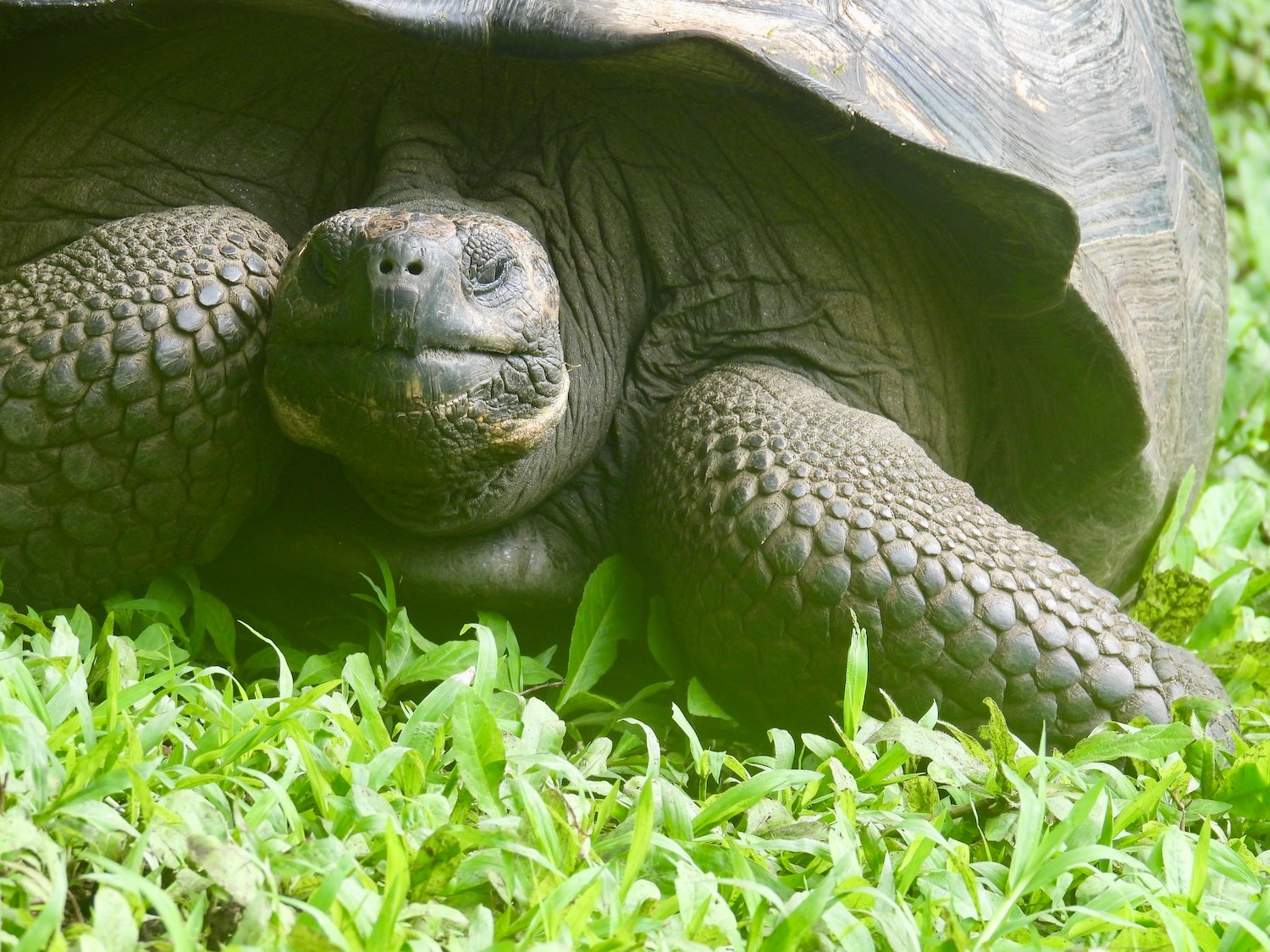
 Support Essential Coverage of Essential Places
Support Essential Coverage of Essential Places






